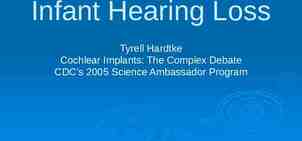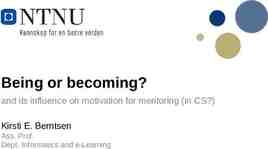The kaiser early onset calculator Presentation to the South West
17 Slides652.00 KB
The kaiser early onset calculator Presentation to the South West Atain group
background The Kaiser early onset sepsis calculator was developed by the Kaiser Permanente health system in California It uses a statistical algorithm to give an estimate of sepsis risk for a newborn infant extrapolated from a big data database It goes onto give a suggested management response stratified against the risk
Theoretical comparison of kaiser vs NICE guidance 149 KAISER Combines continuous variables Uses patiennts from California Does not suggest CRP Applicable 34week up In first 72 hours NICE combines ‘binary risk factors Uses multiple sources from different countries including UK Relies heavily on CRP absolute and trends All gestations First 48 hours
Critical Questions Is the Kaiser generalisable to UK population Is it applicable to population where group B strep is not undertaken Is it organisationally or even medicolegally Accepable not to follow NICE
Potential advantages of Kaiser Published evidence from US and Australia suggests it would reduce antibiotic exposure by 30-50% Early antibiotic exposure is associated with increase in atopy and allergy and childhood obesity Reduce admissions and resulting costs and detrimental effects
Safty – ‘Missed cases’ Its not intellectually valid to think about missed cases – the tool gives an incidence of infection ie tells us how many identical cases we would have to see to identify an infection However the safty is imperitive comparing the two tools
Retrospective analysis of cases with known positive culture Truro Exeter Taunton Bath and Swansea Over 5-8 year period From a total birth population of Giving incidences of 0.5-0.8 per 1000 Kaiser missed NICE missed Some cases missed by both Our conclusion safty comparible
Cases missed by Kaiser Cases who were initially normal and then developed symptoms such as fever ( often representing from home Suggestion: screen and treat infants who were normal and then develop symptoms Do not put patients through Kaiser more than once
Prospective modelling of use of kaiser tool Prospectively apply Kaiser tool but treat as per NICE 3 month audit in Bath would have reduced antibiotic exposure by 43% Similar exercise in Southhamton – reduced antibiotic exposure by
Next steps for me My trust supportive but wanted commissioner support Support of National CRG Neil Marlow lead to letter of support fro Medical director specialist commissioning South – providing we collaborate on prospective audit Developed a local guideline using Kaiser to start and ‘Crpology’ to stop from 36 hrs
Colaborative audit tool Trigger list of risk factors to lead to use tool Excel based tool with drop downs Agreement that the Swansea unit will undertake an analysis after 12-18 months of data
Units currently using Kaiser tool Plymouth from febuary Bath- June Southampton - september Other currently prospectively auditing but treating with kaiser Some considering using kaiser for asymptomatic babies
Experience to date Plymouth – reduced antibiotic exposure by 85% - saved 35 days of tc Bath one culture positive – initially culture and obs only – grew haemophillus at 20 hrs repeat culture neg lp neg crp 47 treated for 7 days
Initial Audit in Bath Kaiser recommendation to start antibiotics 26/119 (21.8%) vs NICE recommendation 67/119 (56.3%) 34.5% reduction in antibiotic usage assuming full adherence to Kaiser guideline No of babies who were actually started on antibiotics 42/119 (35.3%) We use our version of CRPology to determine when to stop antibiotics essentially culture negative, asymptomatic and crp less than 20 from 36 hrs (daily crp if above 20) Max CRP Positive microbiology ntibiotic A duration 77 None 36 hrs- 7 days lood culture 6/9 (3/9 culture B obs (9/119) only) 49 H influenzae* n 1 36 hrs- 5 days Staph epidermidis (longest due to (contaminant) CXR changes) n 1 outine obs R (84/119) 43 None o. of babies N given abx tart antibiotics S 26/26 (26/119) 8/84 36 hrs- 5 days
Plymouth data Compares retrospective group treated by NICE for risk factors alone prev 2 years to infants with at least 1 risk factor Kaiser group excludes 9 infants who were deemed clinically septic and treated I think this is where the 80% reduction comes from 100% treated in first group 16% in second group? 2 year NICE audit (438) Kaiser (at least 1 risk factor)166 Suspected infection Treated for 5 days 136 (31%) 10 (6%) Treated for 36 hrs 275 (63%) 9 (5%)
Lets see how it works https://neonatalsepsiscalculator.kaiserpermanente.org/






















